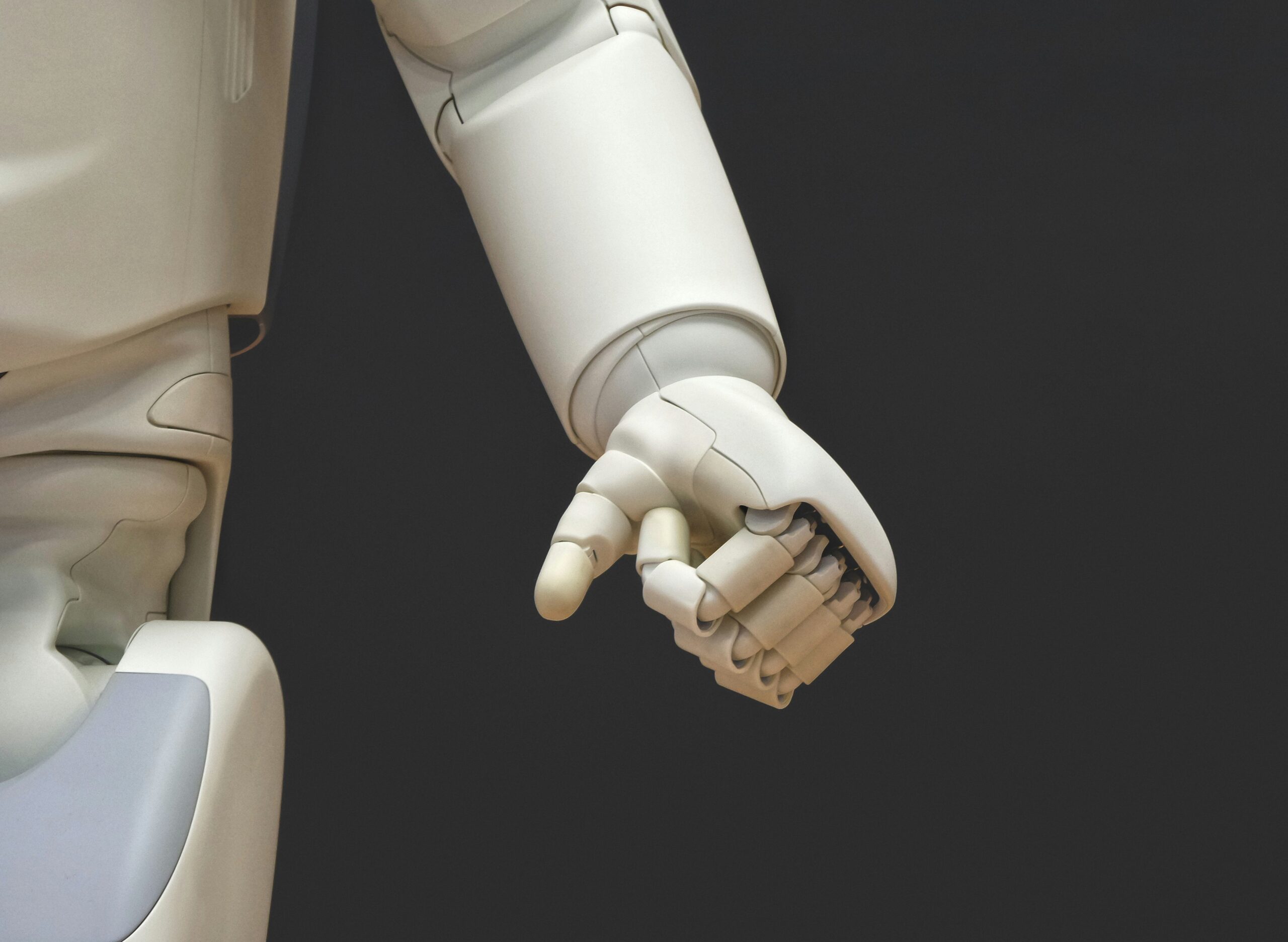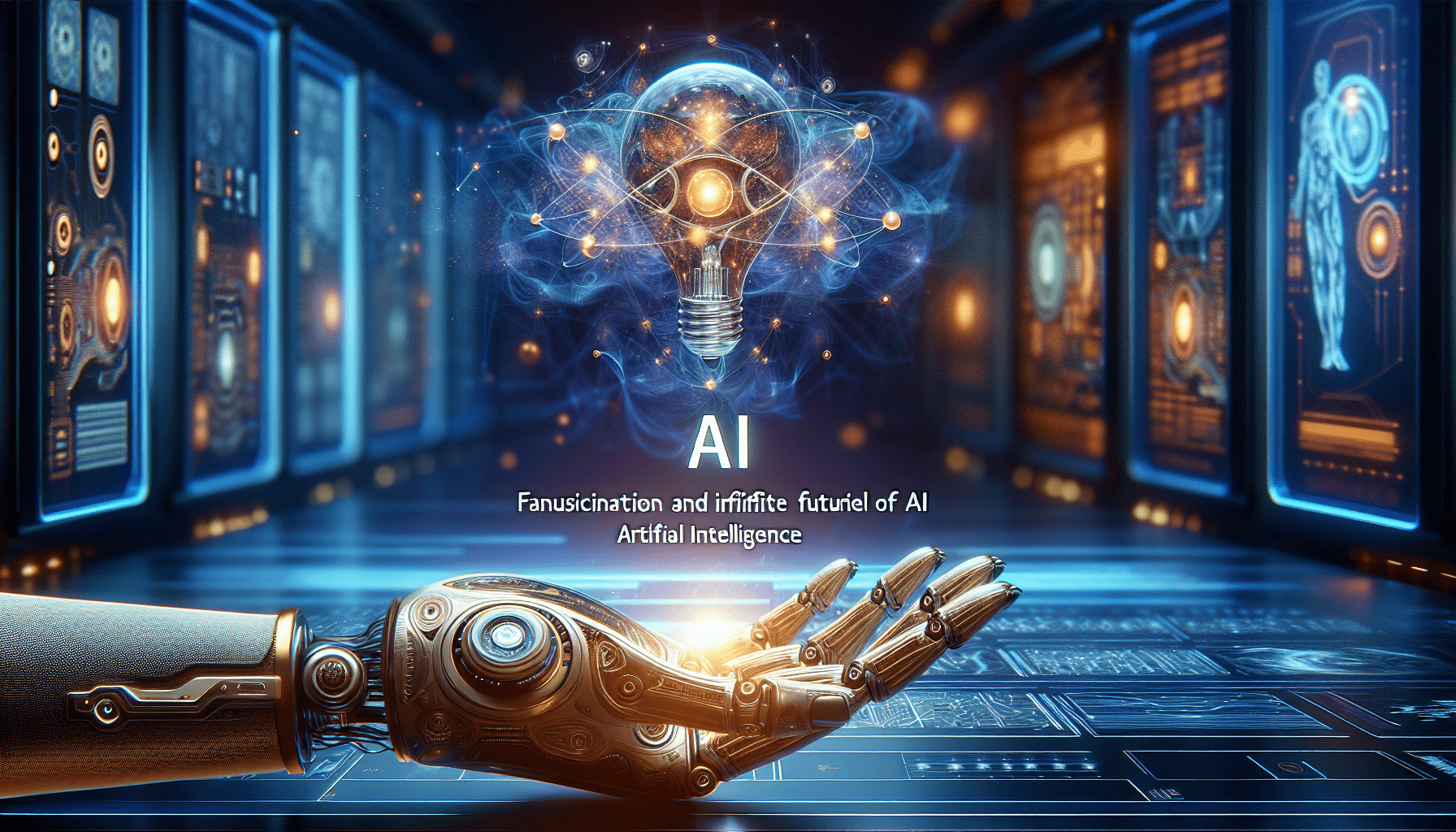Are you curious about the fascinating world of AI? Look no further! “AI for Newbies: A Comprehensive Overview” is your ticket to understanding the ins and outs of Artificial Intelligence. Whether you’re a tech-savvy enthusiast or just beginning to dip your toes into this revolutionary field, this article will guide you through the fundamentals of AI, demystifying complex concepts in a friendly and accessible manner. Get ready to embark on a journey that will leave you captivated by the endless possibilities AI has to offer.
What is AI?
Definition of AI
AI, or Artificial Intelligence, refers to the field of computer science that focuses on creating intelligent machines that can perform tasks that typically require human intelligence. These machines are designed to simulate human cognitive processes, such as learning, problem-solving, and decision-making, allowing them to execute complex tasks with ease. AI encompasses various technologies, algorithms, and methodologies that enable machines to analyze data, extract patterns, and make autonomous decisions.
Types of AI
There are different types of AI that can be categorized based on their capabilities and functionalities:
- Narrow AI: Also known as Weak AI, narrow AI is designed to perform a specific task with high proficiency. Examples of narrow AI include virtual assistants like Siri and self-driving cars.
- General AI: Also referred to as Strong AI, general AI possesses human-level intelligence and can perform any intellectual task that a human being can do. However, achieving true general AI that can match human cognitive abilities is still a work in progress.
- Superintelligent AI: This type of AI surpasses human intelligence and capabilities in virtually every aspect. Superintelligence remains largely theoretical at this point, but it is the subject of intense speculation and debate among AI researchers.
Applications of AI
AI finds applications in various fields and industries, revolutionizing the way processes and tasks are carried out. Some notable applications of AI include:
- Healthcare: AI is being used to diagnose diseases, analyze medical images, and develop personalized treatment plans.
- Finance: AI algorithms are employed for fraud detection, analyzing and predicting market trends, and improving investment strategies.
- Transportation: Autonomous vehicles and AI-powered traffic management systems aim to enhance road safety and efficiency.
- Education: AI is utilized for personalized learning, adaptive testing, and intelligent tutoring systems to enhance the education experience.
- Manufacturing: AI-based automation and robotics optimize production processes, improve product quality, and increase efficiency.
History of AI
Origins of AI
The concept of AI can be traced back to ancient times when Greek myths and legends described artificial beings with human-like qualities. However, the modern development of AI started in the 1950s when computer scientists began exploring the idea of creating machines that could simulate human intelligence.

Milestones in AI development
Throughout history, there have been several significant milestones in the development of AI. Some notable ones include:
- 1956: Dartmouth Workshop: The Dartmouth Workshop, organized by John McCarthy and others, marked the birth of AI as a field of study.
- 1966: ELIZA: Developed by Joseph Weizenbaum, ELIZA was a computer program that could simulate conversation by following simple pattern matching rules.
- 1997: Deep Blue vs. Garry Kasparov: IBM’s Deep Blue supercomputer defeated chess champion Garry Kasparov, demonstrating the power of AI in strategic decision-making.
- 2011: Watson’s Jeopardy Win: IBM’s Watson AI system outperformed human contestants on the trivia show Jeopardy!, showcasing the advancements in natural language processing and knowledge representation.
- 2020: AlphaGo’s Triumph: Google’s AlphaGo AI defeated world champion Go player Lee Sedol, demonstrating AI’s capability to surpass human expertise in complex games.
AI in popular culture
AI has long captivated the imaginations of people worldwide, leading to its depiction in popular culture. From books and movies to TV shows and video games, AI is often portrayed as both a source of fascination and fear. Examples include iconic films like “2001: A Space Odyssey” featuring the AI antagonist HAL 9000 and the popular show “Black Mirror,” which explores the ethical and societal implications of AI.
Machine Learning
Introduction to machine learning
Machine learning is a subset of AI that focuses on developing algorithms and models that enable machines to learn and improve from experience automatically. Instead of being explicitly programmed, machine learning algorithms analyze large datasets, identify patterns, and make predictions or decisions without human intervention.
Supervised learning
Supervised learning is a type of machine learning where algorithms are trained on labeled datasets. The algorithm learns the relationship between the input data and the corresponding desired output by identifying patterns in the data. This enables the algorithm to make predictions or classify new, unseen data accurately.

Unsupervised learning
Unsupervised learning, on the other hand, involves training machine learning algorithms on unlabeled datasets. The algorithm extracts patterns and structures from the data without any predefined labels or categories. This approach is often used for exploratory analysis, clustering, and dimensionality reduction.
Reinforcement learning
Reinforcement learning is a type of machine learning where an algorithm learns from trial and error interactions with an environment. The algorithm receives feedback in the form of rewards or punishments based on its actions, allowing it to learn optimal strategies to achieve specific goals. Reinforcement learning has been successfully applied in robotics, game playing, and autonomous systems.
Deep Learning
Understanding neural networks
Deep learning is a subfield of machine learning that focuses on training neural networks, which are inspired by the structure and function of the human brain. Neural networks consist of interconnected layers of artificial neurons, also known as nodes, that process and transmit information. By adjusting the weights and biases of these connections, neural networks can learn to recognize complex patterns and make accurate predictions.
Convolutional neural networks (CNN)
Convolutional neural networks (CNNs) are a specific type of neural network commonly used in computer vision tasks. CNNs excel at analyzing visual data, such as images and videos, by using specialized layers, such as convolutional and pooling layers, to extract meaningful features. This enables CNNs to perform tasks like image classification and object detection with high accuracy.

Recurrent neural networks (RNN)
Recurrent neural networks (RNNs) are another type of neural network that excels in processing sequential data, such as time series or natural language. Unlike feedforward networks, RNNs have feedback connections, allowing them to capture dependencies and context from previous inputs. RNNs are widely used in tasks like speech recognition, machine translation, and sentiment analysis.
Applications of deep learning
Deep learning has revolutionized various domains and enabled breakthrough advancements in several applications, including:
- Image and Video Analysis: Deep learning powers image classification, object detection, facial recognition, and video analysis, enabling applications like self-driving cars and surveillance systems.
- Natural Language Processing: Deep learning models have greatly improved speech recognition, language translation, sentiment analysis, and chatbot capabilities.
- Healthcare: Deep learning algorithms aid in medical image analysis, disease diagnosis, drug discovery, and personalized medicine.
Natural Language Processing
NLP basics
Natural Language Processing (NLP) is a branch of AI focused on enabling computers to understand, interpret, and generate human language. NLP combines techniques from linguistics, computer science, and AI to process, analyze, and generate textual data. NLP algorithms enable machines to extract meaning, sentiment, and context from text, facilitating tasks like language translation, question answering, and text summarization.
Speech recognition
Speech recognition, a subfield of NLP, involves converting spoken language into written text. Through the use of machine learning algorithms and deep neural networks, speech recognition systems can accurately transcribe spoken words, enabling applications like virtual assistants, transcription services, and voice-controlled systems.

Text generation
Text generation is the task of automatically producing coherent and contextually relevant text. With advancements in deep learning, models like Generative Adversarial Networks (GANs) and Recurrent Neural Networks (RNNs) can generate realistic and human-like text, enabling applications like language generation, storytelling, and content creation.
Sentiment analysis
Sentiment analysis, also known as opinion mining, aims to understand and interpret the subjective information expressed in text data. Through NLP techniques and machine learning algorithms, sentiment analysis can classify text as positive, negative, or neutral, enabling organizations to analyze customer feedback, monitor brand reputation, and make data-driven decisions.
Computer Vision
Overview of computer vision
Computer vision is a field of AI that focuses on enabling computers to extract meaningful information from visual data, such as images and videos. By emulating human visual perception and processing, computer vision algorithms can analyze and interpret visual content, enabling applications like image recognition, object tracking, and facial recognition.
Image classification
Image classification is the task of assigning labels or categories to images based on their content. Deep learning techniques, particularly convolutional neural networks (CNNs), have significantly improved image classification accuracy. Applications of image classification include autonomous vehicles, medical imaging analysis, and content tagging.

Object detection
Object detection involves identifying and localizing specific objects within an image or video. Computer vision algorithms use techniques like feature extraction, image segmentation, and deep learning models to detect and classify objects accurately. Object detection is instrumental in applications like surveillance, autonomous robotics, and augmented reality.
Video analysis
Video analysis encompasses a range of tasks, including action recognition, video summarization, and object tracking. By applying computer vision techniques like motion analysis, temporal modeling, and deep learning architectures, video analysis algorithms can understand and analyze the content of videos. Applications include video surveillance, video search, and video content recommendation.
AI Ethics and Bias
Ethical considerations in AI
As AI becomes more prevalent in society, ethical considerations are crucial. Some key ethical considerations in AI include:
- Privacy: AI systems often rely on extensive data collection, raising concerns about data privacy and protection.
- Algorithmic Fairness: Biases in AI algorithms and decision-making systems can result in unfair outcomes, such as racial or gender discrimination.
- Accountability: Determining responsibility and accountability when AI systems malfunction or make incorrect decisions is a challenging ethical issue.
Algorithm bias and fairness
Algorithmic bias refers to the unfair or discriminatory outcomes produced by AI systems due to biases in the data used for training or biased design decisions. Ensuring algorithmic fairness involves identifying and mitigating these biases, promoting transparency, and diverse representation in AI development.
Transparency and accountability
Transparency and accountability are critical aspects of responsible AI development. Organizations should strive to make AI systems transparent by providing explanations for their decisions and ensuring that humans can understand and challenge the outputs. Establishing accountability frameworks and regulatory guidelines is essential to address potential issues and prevent misuse of AI technologies.
AI in Everyday Life
AI in smartphones and personal assistants
AI has become an integral part of smartphones and personal assistants, enhancing user experiences and enabling various features. Virtual assistants like Siri, Google Assistant, and Alexa utilize AI algorithms for speech recognition, language understanding, and context-aware responses. AI also enhances smartphone cameras, enabling features like portrait mode, automatic scene recognition, and AR capabilities.
AI in healthcare
AI is transforming healthcare by improving diagnostics, treatment planning, and patient care. Medical imaging analysis powered by AI enables early detection of diseases, while machine learning algorithms aid in predicting patient outcomes and personalized treatment plans. AI-powered chatbots and virtual health assistants enhance patient engagement and accessibility to healthcare services.
AI in finance
AI has revolutionized the finance industry by improving fraud detection, risk assessment, and investment strategies. Machine learning algorithms analyze vast amounts of financial data to identify patterns, detect anomalies, and predict market trends. AI-powered chatbots and robo-advisors also provide personalized financial advice and enhance customer service.
AI in transportation
Autonomous vehicles are one of the prominent applications of AI in the transportation sector. AI algorithms enable self-driving cars to perceive their environment, make real-time decisions, and navigate safely. Additionally, AI is used in traffic management systems to optimize traffic flow, reduce congestion, and enhance transportation efficiency.
Challenges and Limitations
Common challenges in AI development
Developing AI systems comes with several challenges, including:
- Data Quality: AI heavily relies on high-quality, diverse, and unbiased data for training. Obtaining and preparing such data can be a significant challenge.
- Computational Power: Training complex AI models, particularly deep learning models, requires substantial computational power and resources.
- Interpretability and Explainability: Many AI algorithms and models lack transparency, making it difficult to understand and interpret their decisions.
Safety concerns
Safety concerns in AI revolve around ensuring AI systems operate reliably and don’t pose risks to humans or the environment. Issues like AI system malfunctions, adversarial attacks, and unintended consequences of AI decision-making can have serious consequences and need to be addressed through rigorous testing, regulations, and safety measures.
Human job displacement
AI’s increasing capabilities raise concerns about automation and job displacement. While AI has the potential to automate repetitive and mundane tasks, it also creates new job opportunities and shifts the workforce towards more creative and complex roles. Ensuring reskilling and upskilling programs are in place can mitigate the impact of AI on employment.
Future of AI
Emerging trends in AI
Several emerging trends are shaping the future of AI, including:
- Explainable AI: The development of AI models that can provide explanations for their decisions and actions.
- Federated Learning: Training AI models collaboratively across multiple devices while keeping data decentralized and secure.
- Edge AI: Moving AI computation closer to the data source, enabling faster and more efficient processing on devices like smartphones and IoT devices.
AI’s impact on society
The increasing adoption of AI technologies has a profound impact on various aspects of society, including:
- Workforce Transformation: AI automation is likely to reshape industries and job roles, requiring adaptability and the development of new skills.
- Education: AI can enhance personalized learning experiences, adapt instruction to individual needs, and provide intelligent tutoring systems.
- Healthcare: AI advancements in diagnostics, predictive analytics, and personalized medicine have the potential to improve patient outcomes and accessibility to healthcare services.
Potential future developments
The future of AI holds immense possibilities, including:
- Advanced Robotics: Integrating AI with robotics can lead to the development of more capable and human-like robots that can perform complex tasks.
- Strong AI: Achieving true general AI, capable of human-like intelligence across a broad range of tasks, remains a long-term goal.
- Ethical AI: Continued focus on ethical considerations and responsible development of AI systems will be crucial to ensure its positive impact on society.
In conclusion, AI has evolved and developed over the years, transforming industries and impacting everyday life. From narrow AI to general AI and the emerging trends in deep learning, natural language processing, and computer vision, AI has become an essential part of our lives. Ethical considerations, transparency, and accountability are vital to addressing challenges and ensuring the responsible use of AI. The future of AI holds great promise, with the potential for advancements that will reshape society and improve various aspects of our lives.






Leave a Reply